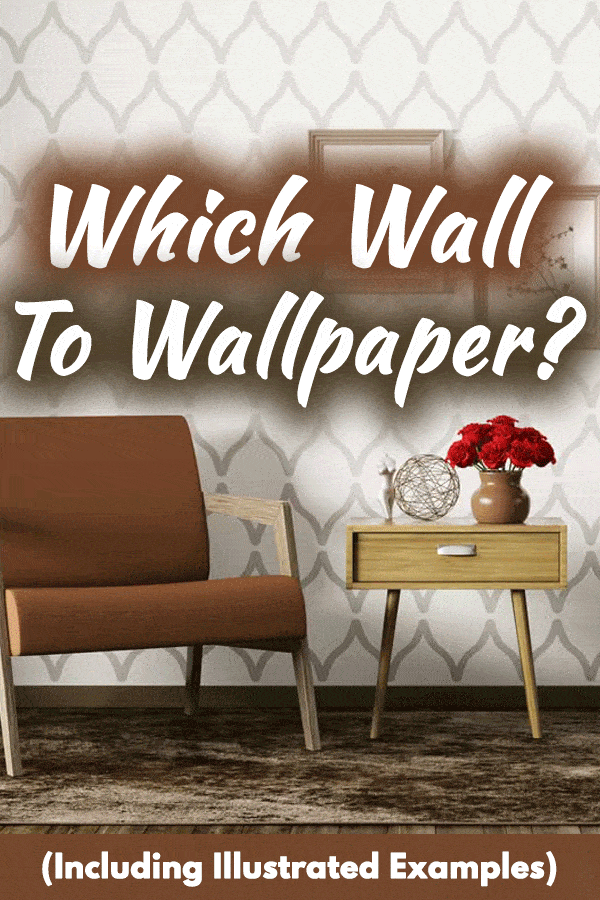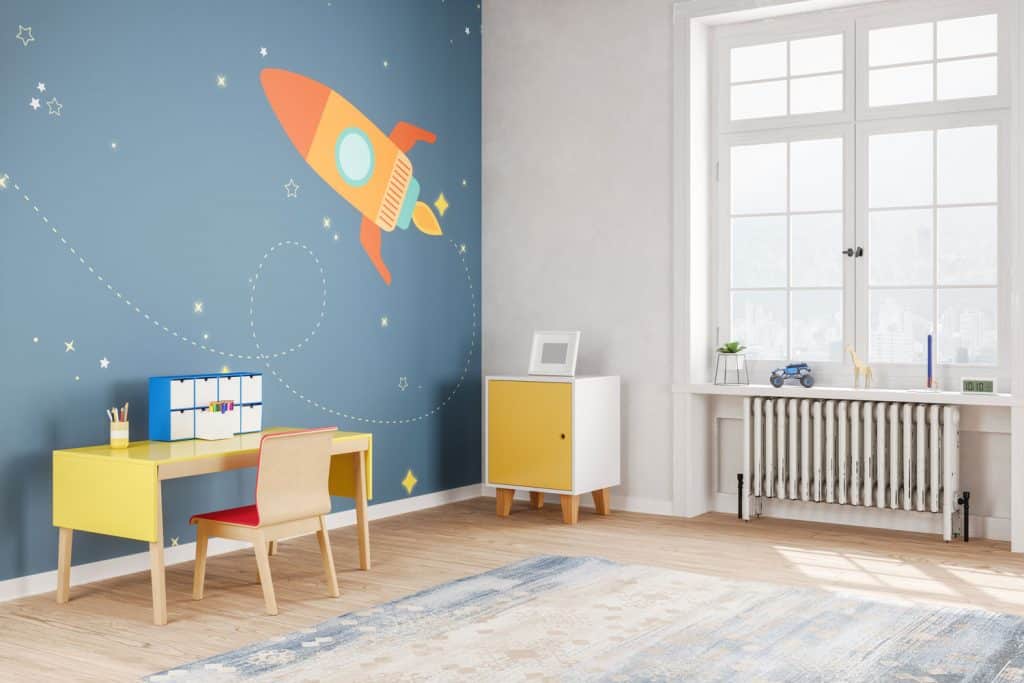 Modern wallpapers make it super easy to experiment with various patterns and colors without ever breaking the bank. They are quick to install, cost-effective, and relatively easy to work with. Thanks to advancements in printing technology, you can now opt for detailed designs that were not previously possible, including beach themes and nautical artwork.
Modern wallpapers make it super easy to experiment with various patterns and colors without ever breaking the bank. They are quick to install, cost-effective, and relatively easy to work with. Thanks to advancements in printing technology, you can now opt for detailed designs that were not previously possible, including beach themes and nautical artwork.
What's the easiest way to select a wall to wallpaper? Start with a wall that already stands out in your room. Ideally, the wall should be one of the first things people notice when they enter the room. In many cases, this will be the wall facing the headboard of your bed. But you can choose a different wall if you’re not too sure. Ask a friend to walk in and identify the one wall which instantly catches their attention. This wall is a good contender.
This isn't a one size fits all rule by any means, as you will see in the sections below, that choosing the ideal wall is entirely up to you. Let's explore some of the most common ways interior designers choose feature walls for decor.
Thinking about wallpaper designs? You might be interested in 75+ Modern Wallpaper Designs You Should Check.
Removing Obstructions to Increase Visibility
The wall should be easily visible. If your guests have to squint to notice design elements or hunt around to find the ‘feature wall’, then it’s no longer a feature wall. Extravagant design elements in your room could make it more difficult to identify the feature wall.
The biggest culprit would be bulky furniture such as sectional sofas which obscure the view. It could even be your bed’s headboard, particularly if is too tall and directly facing the accent wall. If this is the case, then try moving the headboard around or remove it entirely from the picture if it obscures the view.
Any large object can cause potential design conflicts, and these include massive wardrobes, floor to ceiling curtains, and even large art frames that take up too much space. Take to heart the general rule of thumb: the bigger the obstruction, the lower is the impact of the feature wall.
Choosing a Feature Wall in the Bathroom

We may include affiliate links and curated AI content to highlight top design styles.
The focal point of your room doesn’t always have to be the wall you see when you first walk in. Choose a wall that you want to draw attention to. For example in the bathroom, you can accent the wall facing the shower. Another popular alternative is to accent the wall facing the sink.
Accenting a Wall in your Living Room
">
A good choice for the living room would be the fireplace wall. Make sure to highlight any interesting elements in the living room that could be architecturally significant. Use massive artwork to complement living rooms with tall ceilings. If you have impactful artwork, unique furniture, or other bold pieces in the room, try using them to accent the wall for added value.
Below are a few wallpapers you could try.
Minimalist Non-Woven Wallpaper by Bztim


Make a lasting impression with this vertical striped wallpaper featuring contrasting greys with lustrous white. You can pair it with a neutral wallpaper featuring monochromatic colors only.
Click here to buy it on Amazon.
Grey Wallpaper


This grey accented wallpaper establishes a second focal point in your room and complements the first focal point. It is waterproof and can be cleaned with a dry cloth.
You can learn more here on Amazon.
White Wallpaper


You don’t have to cover all your walls in white. Only cover the wall opposite to your first feature wall. Since this is a plain white wallpaper with no illustrations and patterns, you can place furniture in front of it. This is a self-adhesive wallpaper, so all you have to do is peel it and stick in place.
Click here to place an order on Amazon.
What if the Room Doesn’t Have a Focal Point?
If your room doesn’t have a focal point or if you’re unable to identify one, then you can create one. You can decorate the space by mixing and matching miscellaneous accessories and furniture. These elements help create a focal point in your room. Your choice of color for the focal point will set precedence for other parts of the room.
- Beautiful indoor plants can play an important role in drawing attention towards walls. This is an interesting choice if you like gardening and want your guests to notice your hobby.
- If you have a collection of framed artwork you want to decorate on the wall, try hanging them on the accent wall. Make sure the wallpaper complements the aesthetics of the artwork itself.
Choose a Wall that Doesn’t have any Openings or Doors

Accent walls look best when there are no distractions such as openings, windows, and doors. If you have large windows overlooking the scenery outside, then that wall isn’t a good choice to wallpaper. The wallpaper will distract from the scenery instead of complementing it. The light coming from outside can completely offset the wallpaper on the wall.
If you want to add wallpapers to walls with windows and doors, you can do it.
What About a Room with Multiple Focal Points?
If you’re working with a room that has multiple focal points, as is the case with shorter rooms, then avoid applying wallpaper to the longer walls. The color and shapes will make them appear even longer, which could look a little disproportionate. Try wallpapering the shortest wall in the room. This subtly creates more proportionate spaces in your room.
">
Can you Wallpaper Two Feature Walls at the Same Time?
Most homeowners are a little squeamish about wallpapering two feature walls at the same time. This is understandable because it can be difficult to make the appearance look cohesive. But if you undertake this project, you can inject more of your personality into your room.
It also helps if the room you’re working with is spacious. In smaller rooms, the contrasting shapes and colors look more out of place, simply because it’s easy to glance from one wall to the other in the blink of an eye, a nauseating experience for some.
How to Wallpaper Two Feature Walls
The two colors or patterns in your room have to go well together. Any shade of color on one feature wall paired with a darker or lighter shade of the same color on the second wall should do the trick. Most homeowners agree that extreme contrasts such as bright yellow with bright red aren’t a good idea because of the resulting dichotomy.
The wallpaper should add movement, color, and create drama in the space. It should relate to the rest of the room, and form a real relationship with the other walls in the room, more noticeably, the second feature wall. This can be done by using a color that picks up on the colors of the first wall. Make sure the furnishings or accessories that complement the pattern and style of the first feature wall.
It helps to exercise some common sense in your choice of the wallpaper, for instance, it makes no sense to choose a damask floral pattern while the rest of your room has largely Scandinavian themes. Make sure every design element in the room ties everything well together.
You can go for high impact wallpapers that soak in all the attention or choose something more subtle that makes the room slightly more interesting without overwhelming the overall design.
Using Bold Colors to Play with Perception
Your attention naturally gravitates towards warmer colors such as reds, yellows, and oranges. A red colored wall, for instance, will appear closer than a white colored wall. This ‘color theory’ works best in larger rooms. In fact, choosing bold colors for smaller, narrower rooms makes the spaces feel constricted.
The opposite is true in the case of cool hues as well, and these include purple, green, and blue. They create more distance between walls, making shorter walls appear wider.
Narrower Rooms
Blue Illusion Geometric Wallpaper


Here’s a clever geometric pattern that seems to change brightness depending on your viewing angle and the lighting in the room. The blue backsplash is a perfect choice for smaller rooms. Match this pattern with green or purple wallpapers on your second feature wall.
Click here to buy it on Amazon.
Plain Solid Green Color


This is a simple green wallpaper that is devoid of patterns and designs. The wallpaper is made using environmentally friendly materials that are durable and fully waterproof. It's self-adhesive and no need for paste or glue.
Click here to buy it on Amazon.
Wider Rooms
Red Brick Wallpaper


Utilize the red-orange tones of this brick mural to create a perfect feature wall that makes your interior décor truly stand out. The rustic brick red effect will suit both traditional and contemporary furnishings equally well.
Click here to buy it on Amazon.
Floral Wallpaper


The floral wallpaper uses bold colors and decorative patterns to brighten up your room. It should provide the ideal contrast ratio with bold colors such as red and purple. You can get this wallpaper in eight standard sizes.
Click here to buy it on Amazon.
Be Bold, be Creative
There's a saying in interior design: don't be afraid to experiment. So if you've got an idea and want to see if it works with your room or not, make sure to try it out! What's the worse that could happen? Creativity cannot be pinned down by a bunch of rules and regulations, but they do provide a rough guide to help you get started. Besides, wallpapers are becoming increasingly economical and many don't leave a mark on the wall when removed.
 Modern wallpapers make it super easy to experiment with various patterns and colors without ever breaking the bank. They are quick to install, cost-effective, and relatively easy to work with. Thanks to advancements in printing technology, you can now opt for detailed designs that were not previously possible, including beach themes and nautical artwork.
Modern wallpapers make it super easy to experiment with various patterns and colors without ever breaking the bank. They are quick to install, cost-effective, and relatively easy to work with. Thanks to advancements in printing technology, you can now opt for detailed designs that were not previously possible, including beach themes and nautical artwork.











